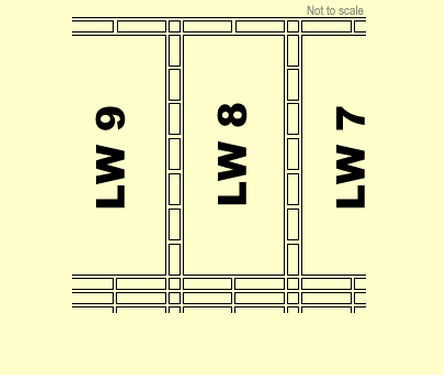CHAIN PILLAR DESIGN
Ground Control 0 CommentThe diagram opposite shows a typical longwall panel with a single row of rectangular chain pillars. Chain pillars can be either square, rectangular or in some case diamond in shape. They can also be in a single or double row configuration. In Australia a single line of rectangular chain pillars is the most common.
The intersections of gateroads and cut throughs are areas which require increased roof support beacuse of the large areas of exposed roof as well as increased roof stresses at these locations. An increased frequency of intersections along a gateroad will increase the possibilty of strata control difficulties.
Chain pillars carry minimal additional loading until the extraction of the adjacent longwall panels. The strata load from above the extracted longwall panel is transferred from the longwall panel to the adjacent chain pillar(s), this is shown in the diagram below. Once the second adjacent longwall panel has been extracted, the chain pillars are subjected to extremely high strata loads. In most situations the pillars will collapse after the second longwall panel has been extracted. This reduces the irregularity of subsidence at the surface.
The strength of a square or rectangular pillar can be determined from the following formula:
![]()
where:
p = pillar width (m)
m = pillar height (m)
NB: For Australian conditions a coefficient of 7.4 is used in place of 7.2
The load that is transferred onto a pillar is calculated by a simple emperical formula, the equation varies depending on the type of pillars and subsidence method being used:
- Single Line of square chain pillars
- Double line of square chain pillars
- Single line of rectangular chain pillars
- Double line of rectangular chain pillars
For rectangular chain pillars, if the width of one side of the pillar is greater than twice the width of the other side then the effective width method must be employed to calculate the strength of the pillar.


